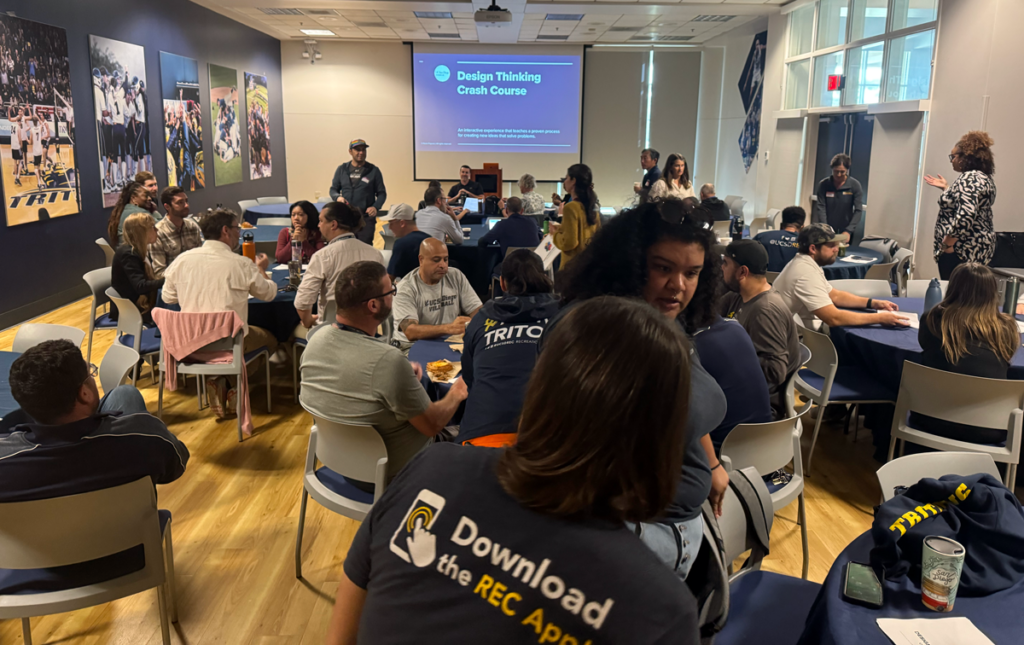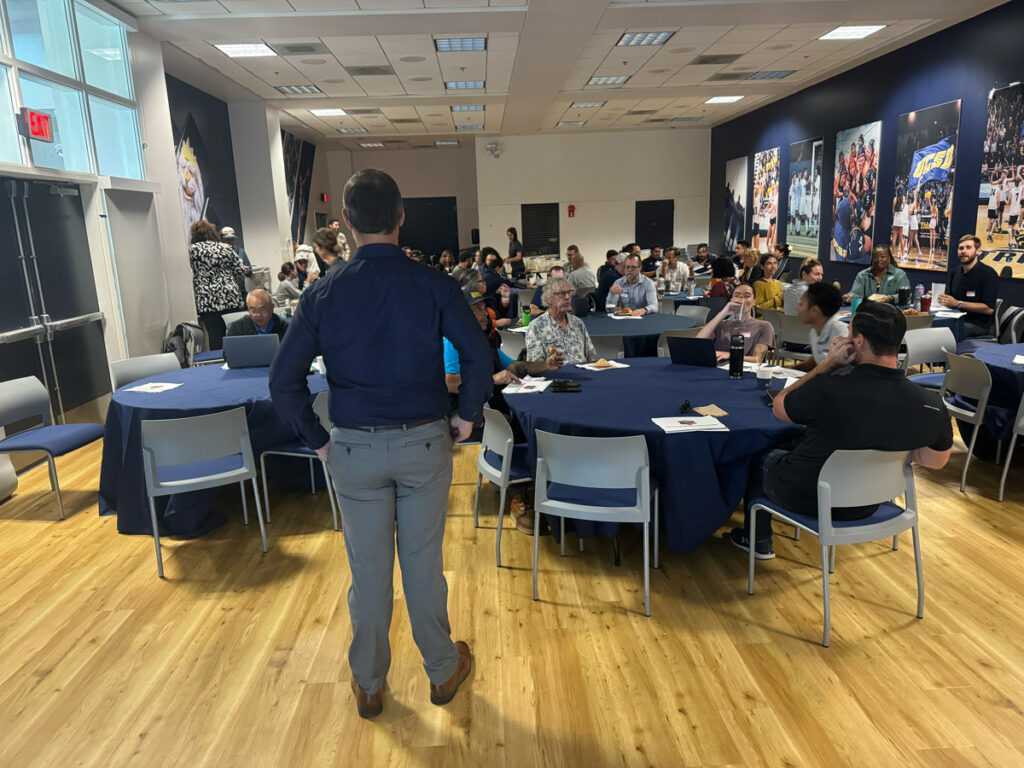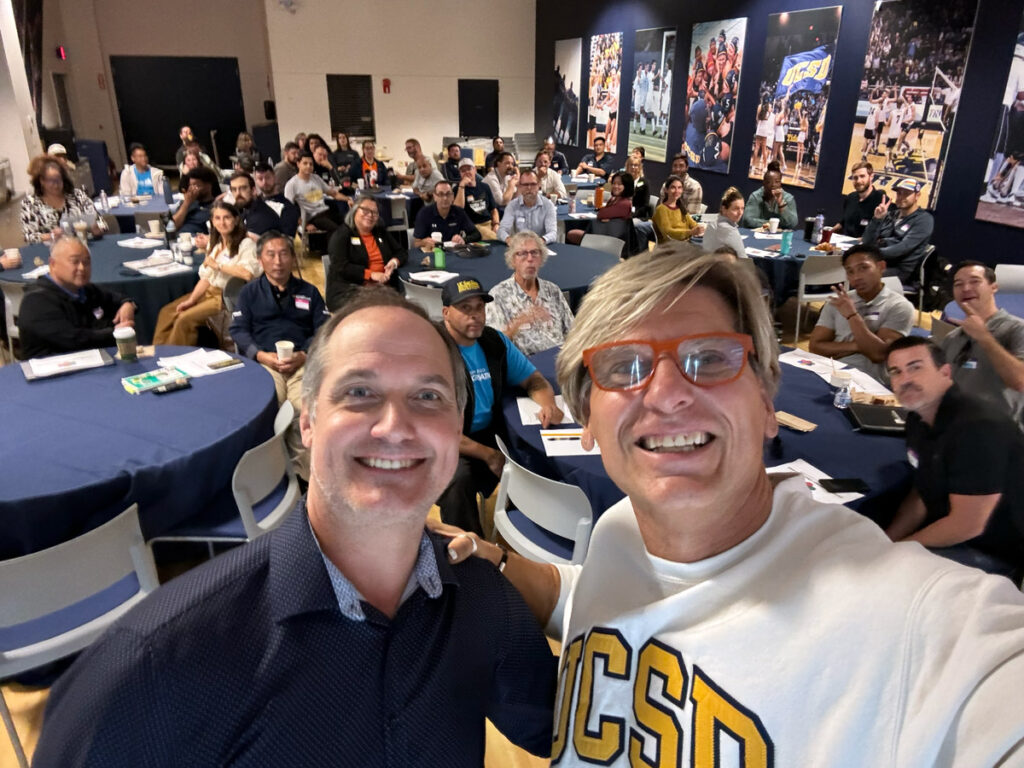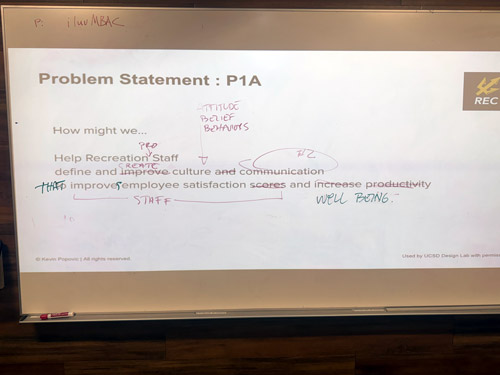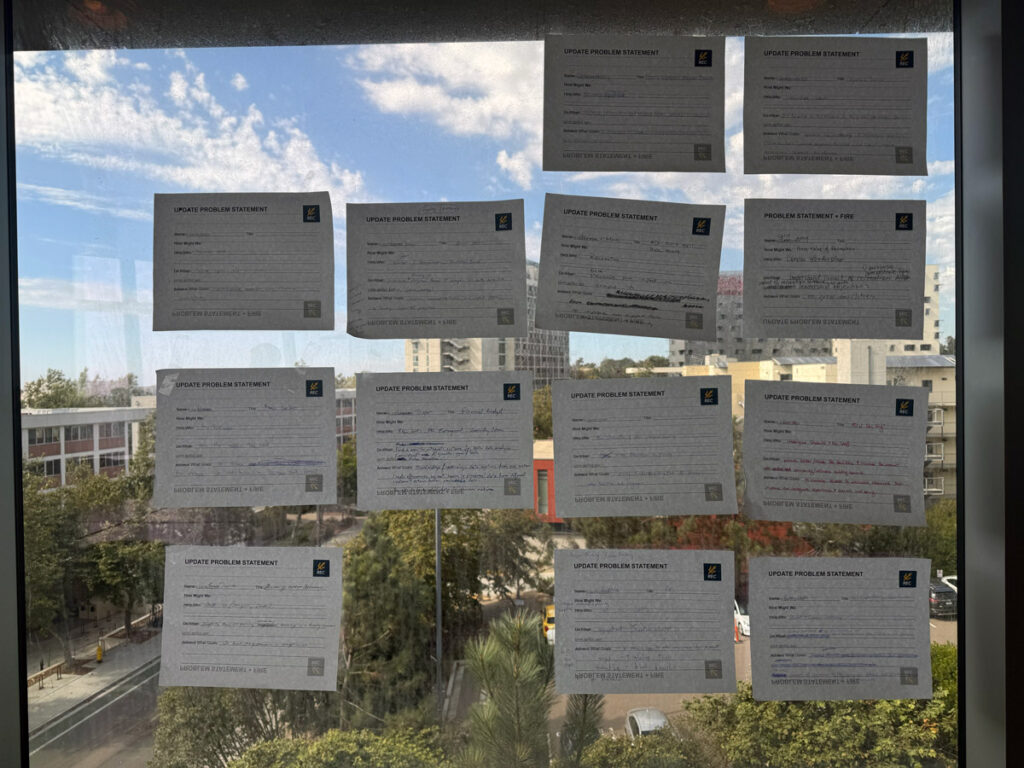Abstract
The UC San Diego Recreation Department, in partnership with The Idea Guy, is redefining the role and perception of university recreation through the application of Design Thinking principles and the Innovation Funnel methodology. By addressing six critical organizational challenges, the department is creating a replicable framework for operational excellence and enhancing its position as an equal to research-based departments on campus. Central to this initiative is the department’s goal to demonstrate its impact through rigorous academic scholarship, publishing a series of papers in peer-reviewed journals to gain recognition akin to faculty achievements. These publications will highlight innovations in funding strategies, system integration, workplace wellness, storytelling for resource advocacy, and student engagement in recreational development. This strategic approach not only enhances the department’s visibility and credibility within the university but also elevates its reputation nationally, establishing it as a thought leader in the field of recreation management. By aligning its goals with the broader academic mission, UCSD Recreation seeks to secure sustained funding and recognition, transforming perceptions of its role in higher education.
Introduction
Design thinking—a human-centered approach to problem-solving—has been increasingly adopted by university recreation departments to enhance student well-being and engagement. This initial literature review begins to examine how these departments integrate design thinking into facility design, programming, and service delivery.
1. Facility Design
Universities are applying design thinking to create inclusive and multifunctional recreational spaces that cater to diverse student needs:
- University of Wisconsin’s Bakke Recreation & Wellbeing Center: Opened in April 2023, this center features the Willow Deck, an outdoor wellness area facing Lake Mendota, and an outdoor turf fitness space on the roof. These spaces encourage outdoor fitness activities, promoting holistic student well-being. The design emphasizes security and visibility, with active interior spaces overlooking the outdoor areas to enhance safety and encourage use.
- Texas A&M University’s Southside Recreation Center: This facility includes a multipurpose outdoor area for activities like yoga and cornhole, and a dedicated turf fitness area. The design considers specific use cases, ensuring spaces are tailored to student needs. The ground-level outdoor fitness terrace utilizes the site’s topography to maintain security while providing accessible outdoor fitness options.
2. Inclusive Design Practices
Incorporating universal design (UD) principles ensures recreational facilities are accessible to all students, including those with disabilities:
- Missouri State University’s Recreation Center: The design team included UD as a core objective, aiming to make the facility accessible to the entire university community. Disabled students actively participated in the design process, providing insights that led to features accommodating diverse abilities. This collaborative approach fostered a sense of inclusion and ensured the facility met varied student needs.
3. Integration of Health and Wellness Services
Design thinking facilitates the integration of health services within recreational facilities, promoting holistic wellness:
- University of Colorado Denver’s Anschutz Health and Wellness Center: This center combines a fitness facility, wellness clinic, research labs, a healthy bistro, and educational spaces. The design fosters a culture of sustainability and healthy lifestyles, addressing issues like obesity through comprehensive wellness services.
- Northern Arizona University’s Health and Learning Center: This facility consolidates student health and counseling services, classrooms, campus recreation, and intercollegiate athletics into one collaborative environment. The design encourages interaction among diverse user groups, enhancing the overall student experience.
4. Student Engagement and Leadership Development
Design thinking in recreation departments also focuses on fostering leadership and community among students:
- Campus Recreation and Leadership Development: Recreation activities are designed to build community and promote well-being, providing students with opportunities for leadership and personal growth. Programs are tailored to meet diverse student interests, encouraging participation and engagement.
5. Addressing Diverse Student Needs
Recreation departments are rethinking programming and facility design to cater to a diverse student population:
- Delivering Effective Collegiate Recreation to Diverse Students: By understanding the varied backgrounds and needs of students, recreation centers are creating responsive spaces that inspire all students to engage in recreational activities, promoting inclusivity and well-being.
6. Enhancing Operational Efficiency
Implementing design thinking principles has enabled recreation departments to streamline processes and improve service delivery:
- Standard Operating Procedures (SOPs): Developing detailed SOPs for recurring tasks ensures consistency and reduces errors. By involving staff in the creation of these procedures, departments can identify bottlenecks and implement solutions that enhance efficiency. Retrieved from Campus Rec Magazine
- Data-Driven Decision Making: Utilizing management dashboards to monitor key outcomes allows departments to make informed decisions, leading to improved quality and resource allocation. Retrieved from National Recreation and Park Association
7. Addressing Staffing Challenges
Design thinking facilitates innovative approaches to recruiting, training, and retaining quality staff:
- Understanding Motivations: Researching the motivations of young professionals helps in developing effective recruitment and retention strategies tailored to their needs.
Retrieved from National Recreation and Park Association - Continuous Professional Development: Implementing programs that build leadership skills and provide growth opportunities fosters a committed and competent workforce.
Retrieved from National Recreation and Park Association
8. Program Development and Community Engagement
Applying design thinking in program development ensures that offerings align with community needs and preferences:
- Inclusive Program Design: Engaging diverse community members in the design process leads to programs that are accessible and appealing to a broader audience.
Retrieved from Creative Innovation Group - Adapting to Trends: Staying attuned to evolving recreational trends allows departments to innovate and remain relevant, thereby increasing participation and satisfaction.
Retrieved from Creative Innovation Group
In summary, university recreation departments are employing design thinking principles to effectively address management challenges by fostering innovation, enhancing operational efficiency, and better serving their communities. Departments are also leveraging design thinking to create inclusive, multifunctional spaces that integrate health services, promote well-being, and foster community engagement. By involving students in the design process and focusing on diverse needs, these departments enhance the overall student experience.
Opportunities to Pioneer New Work
Based on the work already being conducted between The Idea Guy® and the UCSD Recreation Department—particularly the application of the Innovation Funnel methodology, Problem Statements, and Design Thinking principles—there are several pioneering opportunities the department could explore to position itself as a leader in university recreation management:
- Inclusive Engagement Frameworks
Build a replicable model for engaging multilingual and diverse cultural groups in organizational decision-making. The work you’ve done simplifying and translating problem statements demonstrates a scalable method that other departments can adopt for creating inclusive, participatory environments. - Data-Informed Funding Models
By aligning program funding decisions with data-driven analysis (as outlined in P4), UCSD Recreation could develop a case study or white paper on creating sustainable funding strategies that maximize campus impact. This could position the department as a thought leader in resource allocation strategies. - Operational Innovation through System Integration
Implementing systems to centralize data and streamline processes (P2) could serve as a model for efficiency in campus recreation. The department could document its journey and lessons learned to share best practices with peer institutions. - Storytelling for Impact
By using innovative storytelling techniques to share success stories and highlight resource needs (P3), the department could lead in demonstrating how effective communication strategies can drive internal morale, external recognition, and increased funding. - Student Advocacy and Leadership
Empower students to advocate for new spaces and programs (P6) by designing a robust process that includes workshops, campaigns, and referendum advocacy. This initiative could set a standard for student-led recreation improvements in higher education. - Holistic Workplace Wellness Programs
Creating a workplace culture that prioritizes well-being (P1 and P5) could be turned into a replicable framework for other departments. The integration of employee feedback mechanisms and wellness tools could serve as a benchmark for organizational well-being.
Steps to Share and Scale Success
- Academic Papers/Case Studies: Document each initiative and its outcomes in a format that can be shared at conferences or through publications.
- Workshops and Webinars: Host events to share methodologies with other universities, showcasing the department’s leadership in innovation.
- Collaborative Research Projects: Partner with other universities to further test and refine methodologies, emphasizing scalability and adaptability.
This approach not only strengthens UCSD Recreation’s role on campus but also establishes it as an innovator in the broader field of university recreation.

